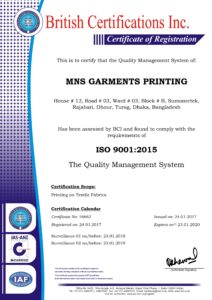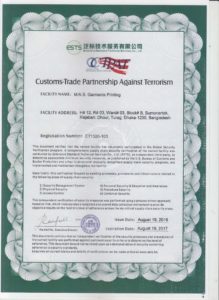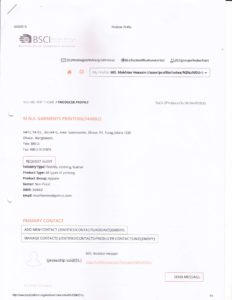
Supplier Compliance Levels in Detail
We are committed to transparent reporting. And we dedicate major resources to monitor our suppliers' sustainability performance and support them in making improvements. That's why we disclose the compliance level of our entire supplier base in detail, down to every single question from our Sustainable Impact Partnership Programme (SIPP), which we started to implementing in 2015.SIPP replaces our previous Full Audit Programme (FAP), we expect the transition to continue throughout 2017.
| AUDIT QUESTION | EMEA | FAR EAST | SOUTH ASIA | TOTAL |
|---|---|---|---|---|
|
CHILD LABOUR |
||||
| TOTAL COMPLIANCE | 100% | 100% | 100% | 100% |
|
YOUNG WORKERS' REQUIREMENTS |
||||
| TOTAL COMPLIANCE | 28% | 82% | 100% | 65% |
|
WORKERS' BASIC RIGHTS |
||||
| TOTAL COMPLIANCE | 80% | 90% | 77% | 84% |
|
WORKERS' RIGHTS |
||||
| TOTAL COMPLIANCE | 90% | 73% | 87% | 81% |
|
HEALTH AND SAFETY |
||||
| TOTAL COMPLIANCE | 87% | 82% | 89% | 86% |
|
ENVIRONMENT |
||||
| TOTAL COMPLIANCE | 84% | 75% | 77% | 77% |
|
HOUSING CONDITIONS |
||||
| TOTAL COMPLIANCE | 95% | 94% | 95% | |
|
HOME WORKERS |
||||
| TOTAL COMPLIANCE | 90% | 51% | 89% | 63% |
|
CHEMICAL HANDLING (IN PREVIOUS YEARS THIS CHAPTER ALSO INCLUDED REQUIREMENTS FOR SANDBLASTING. PLEASE NOTE THAT SANDBLASTING IS NO LONGER PERMITTED IN ANY FACTORY SUPPLYING THE H&M GROUP |
||||
| TOTAL COMPLIANCE | 74% | 85% | 86% | 83% |
|
METAL PLATING |
||||
| TOTAL COMPLIANCE | 100% | 75% | 86% | 80% |
|
TRANSPARENCY & MONITORING |
||||
| TOTAL COMPLIANCE | 99% | 99% | 99% | 99% |
1. ABOUT THE DATA
The above data provides a detailed overview of the compliance level amongst all audited and approved H&M Group first tier supplier factories by 31 May 2015. First tier factories are either owned (commonly performing the final manufacturing) or subcontracted (normally performing specific tasks such as washing our dyeing) by our suppliers. All first tier factories are covered by our Sustainability Commitment, which replaced our previous Code of Conduct on 1 February 2016, and our Sustainable Impact Partnership Programme (SIPP), which we started implementing in 2015 to replace our Full Audit Programme (FAP). We expect the transition to continue throughout 2017. The above figures represent the latest audit result according to FAP from each factory. By disclosing the compliance data, we aim to give the most accurate status of our supplier’s compliance performance.
Some of the audit questions are minimum requirements. H&M does not accept any non-compliance for minimum requirements. In case we detect non-compliance, we thoroughly follow up and carry out in-depth analyses of each individual case. At the end of the reporting period a number of factories were subject to investigations or in a phase out transition. As a result, the total compliance data on some minimum requirements shows less than 100% (96-99%) in some case.
Not all questions from our audit questionnaire apply to every factory. Questions are therefore only applied when relevant and consequently data is available for these factories only. Thus the percentage figures do not necessarily relate to the total number of audits conducted in each region. Compliance levels provided in italic in the table above are based on audit results from less than 10 factories. As a result, it is not likely to be representative for the whole of H&M´s supplier base.
2. HOW WE USE THE DATA INTERNALLY
The data is the foundation for our ongoing work with our suppliers towards lasting improvements. Individual results from each factory are clearly communicated to the supplier and discussed in an open dialogue. The data also plays an important role in our purchasing decisions and we systematically reward better performing suppliers.
We also use it to constantly improve our methods, analysis, raise our expectations, add and update our audit questionnaire to make it easier to detect violations. For this reason, the data should not be compared year on year.
When non-compliance occurs, we conduct thorough investigations and set up strategies and projects aiming to improve compliance for the specific issue, both on individual factory level as well as from a holistic perspective. If important areas indicate unacceptable compliance levels, we can decide to turn it into one of our focus area, set dedicated strategies and follow-up accordingly. When analysing compliance we also pay great attention to geographical differences for nuanced analysis and remediation. If we identify a region or country with low compliance on a certain issue, we pay extra attention and target customised projects to improve this issue.
For some questions that address complex issues – for example freedom to join or form a union – non-compliance can be difficult to detect through audits alone. We are aware that although no violations could be detected during our audits, these issues require our constant attention. So we constantly improve our audit methods to improve our ability to detect any issues and contribute to systemic change in the concerned communities.










